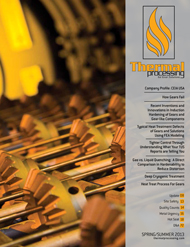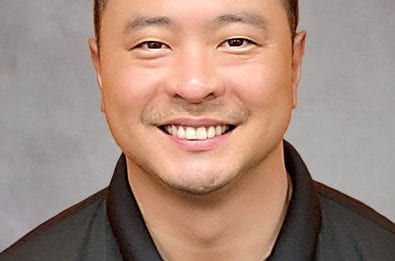Heat treaters are always looking for methods to improve productivity without compromising quality. One method that many heat treaters have put in place is to incrementally improve various areas around controls and electronic data to drive costs down, increase throughput, and still deliver a quality product.
In its simplest form, automation is creating a sequence of steps that flow continuously. Basic steps of automation can be broken into different areas of operation, such as operational procedures, preventive maintenance programs, shared data, and smarter controls. Each operation may break these down differently, but all have stakeholders where specific activities related to process automation or data and information is important.
Maintenance is costly and tends to be very reactive. A reactive approach to maintenance bypasses the crucial planning phase of production, risking a reduction in overall equipment utilization as well as any excess capacity, thus leaving opportunities for higher profit margins on the table. Using SCADA (supervisory control and data acquisition) systems and smart process controls can help with this. Rapid access to information that can be used by personnel throughout the facility enables a better decision-making process. By referencing historical data, important questions can be answered more quickly: Did the load take longer to heat than usual? Is the temperature overshooting? Is the carbon percentage oscillating? This information can be valuable when the right person has access to it. Effective planning and use of historical data enhances the heat treater’s ability to produce quality parts.
Traditionally, data available on paper charts may not have been used effectively because it was not readily accessible. The “old days” of tracking down a chart to scan or fax it are part of the past. Today, more information is available thanks to the use of open communication standards and plant-wide networks. Access to key data points must be easy so that the right person can analyze the data, compare it to historical data, and determine whether action is necessary. Rework creates significantly more problems because of the substantially longer furnace run times required, additional notification to the customer, longer delivery time, and reduced margins on the job.
Process control is the ability to meet certain parameters over time by using inputs from the process and controlling outputs for desired results. Today’s control and sensor technology automates much of this. With technology enhancements come more sophisticated controls, allowing users to make better decisions. These decisions can be on the process itself, productivity, quality, and safety. Traditionally, the inputs for a process were disconnected, but today these are brought together to provide a holistic view of the control decision process. There is even a convergence of modeling software and controls. For example, heat treaters can use diffusion modeling software for carburizing applications where soak time is modified to meet effective case depth requirements.
PLCs, discrete microprocessor controls, or a hybrid of the two are today’s standards for most heat treating equipment. Microprocessor controllers typically provide single or multiple PID control loops with expanded features such as event and recipe management. To maximize the benefits of the control technology, the user should design a system for repeatability with a level of flexibility necessary for the equipment. One element of such a design is recipe control. A recipe is made up of the steps of the heat treating process. It can be a simple ramp to temperature and a timed soak; it can also be a more complex process in which multiple temperature inputs, time, atmosphere, pressure, and other variables need to be managed.
Applying incremental steps allows for greater automation and provides better access to information. Using recipe control to automate a nitriding, vacuum, carburizing, or even a simple temperature ramp soak leads to greater chances of running the process correctly and greater opportunity for repeatability. Automation of a process using programmable controls can virtually eliminate variations in a process from shift to shift or operator to operator. Overall productivity benefits from automated process controls as well. Operators now have an opportunity to contribute to other areas instead of wasting costly time watching the process to ensure accurate metallurgical results.
In today’s heat treating environments, controls provide user-defined audible, visual, and electronic alarms, indicating that a cycle is complete or that a deviation from a process has occurred. Recipes can be set up so that, upon completion, the heat is turned off; this eliminates unnecessary costs and ensures parts are heated for the necessary amount of time. Smart alarms capture the attention of operators when a situation needs to be addressed. Such steps in automating a process are relatively simple and positively impact labor and utilization.
With more devices and sensors monitoring the process and a system in place to capture information, data can be accessed remotely. Whether it is a critical job requiring periodic remote monitoring or the ability to tweak a cycle, the technology exists to keep eyes on critical runs at all times. With the right systems in place, technology can be used to refine processes and deliver quality parts more efficiently. The more accessible those data points are, the greater the opportunity for repeatability.
Today’s heat treater depends on proven science and state-of-the-art technology to stay competitive. Technology advances continuously. Those who resist change will be left behind, wondering why their business is declining, and will be surpassed by growing global competition. Those who embrace the opportunity that automation and digital documentation provide will continue to grow and prosper.































